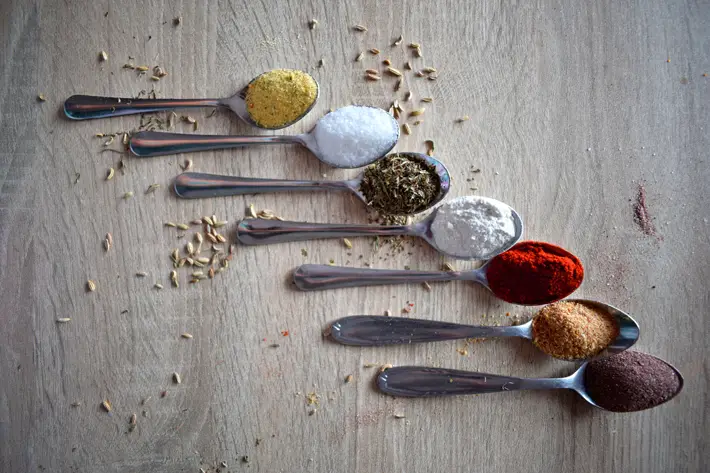The Psychology of Taste: How Our Senses Affect Our Enjoyment of Food and Beyond

Have you ever taken a bite of something and been instantly transported back in time? Maybe it was the taste of your grandmother’s chicken and rice (find a recipe for that dish here: minuterice.com/recipes/cheesy-chicken-and-rice/) or the aroma of freshly brewed coffee that reminded you of lazy Sunday mornings.
The power of taste to evoke memories and emotions is truly remarkable. But have you ever wondered why some foods taste better to you than others? Or why certain flavours can be so polarizing? The answer lies in the complex interplay between our senses, our experiences, and our psychology.
In this article, we will explore the fascinating world of taste psychology and how it influences our enjoyment of food and beyond. From the science of taste perception to the role of emotions and memories in shaping our preferences, get ready to delve into the fascinating world of taste.
The Science of Taste: How Our Senses Work Together
The human experience of taste is complex and multifaceted, involving all five of our senses. While taste itself is often considered the most important aspect of enjoying food, the truth is that our sense of smell, touch, sight, and hearing all play important roles in shaping our perceptions of flavour. In fact, research has shown that as much as 80% of what we perceive as taste actually comes from our sense of smell.
Similarly, the texture, appearance, and even sounds of food can all impact our enjoyment of a meal. Additionally, our sense of taste can change over time due to factors such as age, illness, and medication use. Understanding how our senses work together to create the experience of taste is essential to understanding why we enjoy certain foods and how we can enhance our appreciation of different flavours.
The Psychology of Taste: How Our Mind Affects Our Perception of Flavour
The way we experience the taste of food is not just a product of our senses; it is also influenced by our mind. In this section, we will explore the fascinating world of the psychology of taste, and how our mind affects our perception of flavour.
Emotions play a significant role in how we experience food. When we are happy, our perception of flavour can be heightened, making food taste better. Conversely, when we are sad or stressed, our taste buds may become less sensitive, making food less enjoyable. The reason for this lies in the way our brain processes information. When we experience positive emotions, the brain releases dopamine, a chemical that enhances our pleasure and reward centers. This release of dopamine can heighten our senses, including our taste buds, making food taste better. On the other hand, when we are stressed or anxious, the brain releases cortisol, a hormone that can dull our taste buds, making food taste less enjoyable.
Our expectations also have a significant impact on our enjoyment of food. If we expect a particular food to taste good, it is more likely to taste good to us. Similarly, if we have low expectations, we may find that the food tastes worse than it actually is. This phenomenon is known as the power of suggestion, and it has been demonstrated in many studies. For example, in one study, participants were given a glass of wine that they were told was expensive and high quality, while another group was given the same wine but told it was cheap. The participants who believed they were drinking the expensive wine rated it as tasting better than those who believed they were drinking the cheap wine, even though it was the same wine in both glasses.
Our taste preferences are also influenced by our culture, upbringing, and experience. The foods we eat as children can shape our taste preferences for the rest of our lives. For example, people who grew up eating spicy food may have a higher tolerance for spicy flavours than those who did not. Similarly, people from different cultures may prefer different flavour profiles, such as sweet, salty, or sour. Our taste preferences can also be influenced by our exposure to different cuisines and ingredients. Trying new foods and flavours can broaden our palate and lead us to discover new taste sensations.
The Multisensory Experience of Food: Beyond Taste
When it comes to food, taste is just one part of the sensory experience. The texture, colour, presentation, and even the sounds around us can greatly impact our enjoyment of food. For example, the crunch of a perfectly fried chicken, the creaminess of a well-made risotto, or the smoothness of a chocolate truffle can all enhance our dining experience. The colour and presentation of food can also greatly impact our appetite and enjoyment. Brightly coloured fruits and vegetables can be visually appealing and stimulate our appetite. The way food is plated or served can also enhance the dining experience, making us feel more satisfied and indulgent.
Moreover, sound and ambiance also play a role in our perception of food. The sound of sizzling bacon or the pop of champagne can add excitement to our meal, while the hum of conversation and music can create a relaxing and enjoyable atmosphere. Restaurants and chefs often consider these factors when designing their menus and dining experiences to create a memorable and enjoyable experience for their guests.
Understanding the multisensory experience of food can help us appreciate and savor our meals more fully. By paying attention to the different sensory components of our food, we can deepen our appreciation for the culinary arts and explore new flavour combinations and experiences.
The Practical Applications of the Psychology of Taste
The study of the psychology of taste can have practical applications in our daily lives, particularly when it comes to cooking and dining. By understanding the various factors that influence our perception of flavour, we can enhance our culinary experiences and make more informed choices about what we eat.
One way to apply the psychology of taste in our own kitchens is to focus on creating a multisensory dining experience. This means considering not only the flavours of a dish, but also the texture, colour, presentation, and ambiance of the meal. For example, experimenting with different textures can add interest and complexity to a dish, while using colourful ingredients can make it more visually appealing. Setting the mood with lighting and music can also enhance the dining experience.
Restaurants and food companies also use the psychology of taste to influence our food choices. For example, menu design can affect what we order, with certain dishes highlighted or priced strategically to encourage sales. Packaging and labeling can also affect our perception of a product, with certain words or phrases used to suggest healthiness, quality, or authenticity.
By understanding these techniques, we can become more aware of the ways in which our choices are influenced and make more conscious decisions about what we eat. Overall, the psychology of taste offers a fascinating and useful perspective on the complex interplay between our senses, our minds, and the food we eat.










